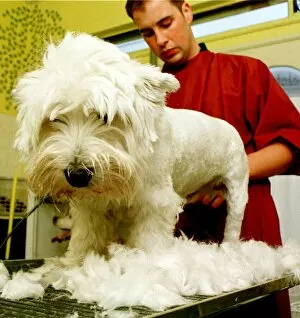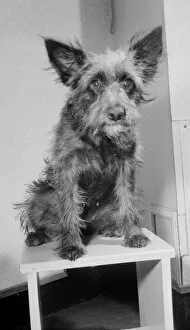Hairdressers Collection (#9)
In the 1930s, hairdressers played a significant role in shaping people's styles and trends
For sale as Licensed Images
Choose your image, Select your licence and Download the media
In the 1930s, hairdressers played a significant role in shaping people's styles and trends. From iconic figures like Cathy McGowan getting her hair cut to Lulu having her locks styled, these professionals were at the forefront of fashion. One glimpse into history takes us to the Medical Fund Hairdressing Room on Milton Road around 1910. This establishment provided not only hairstyling services but also contributed to healthcare initiatives—an interesting combination indeed. The name Vidal Sassoon immediately comes to mind when discussing influential hairdressers. His innovative techniques revolutionized the industry and left a lasting impact on hairstyling as we know it today. Another notable figure is Gwendoline Dyer, who owned a renowned hair salon that attracted clients seeking exceptional service and style. Across continents, even in France, Citroen 2CV cars could be spotted parked outside quaint little hair salons—a charming sight that added character to the streets. Hairdressers' talents extended beyond just cutting and styling; they often found themselves judging beauty pageants too. In Middlesbrough circa 1971, a local hairdresser had the honor of being one of Miss Gibraltar's judges—a testament to their expertise in enhancing beauty. Even celebrities sought out skilled hands for their glamorous looks. Olivia de Havilland posed for studio portraits showcasing her impeccable hairstyle—proof that talented they were essential partners in creating stunning visuals. Advertisements from yesteryears give us insight into popular products used by both professionals and individuals alike. Hinde's Hair Curlers caught attention with promises of luscious curls while Emile offered solutions for all your hairstyling needs. Traveling back further in time reveals an intriguing practice: French barbers putting male clients' hair into curling papers as early as 1840—a fascinating technique long forgotten but indicative of how far this craft has evolved over centuries.




